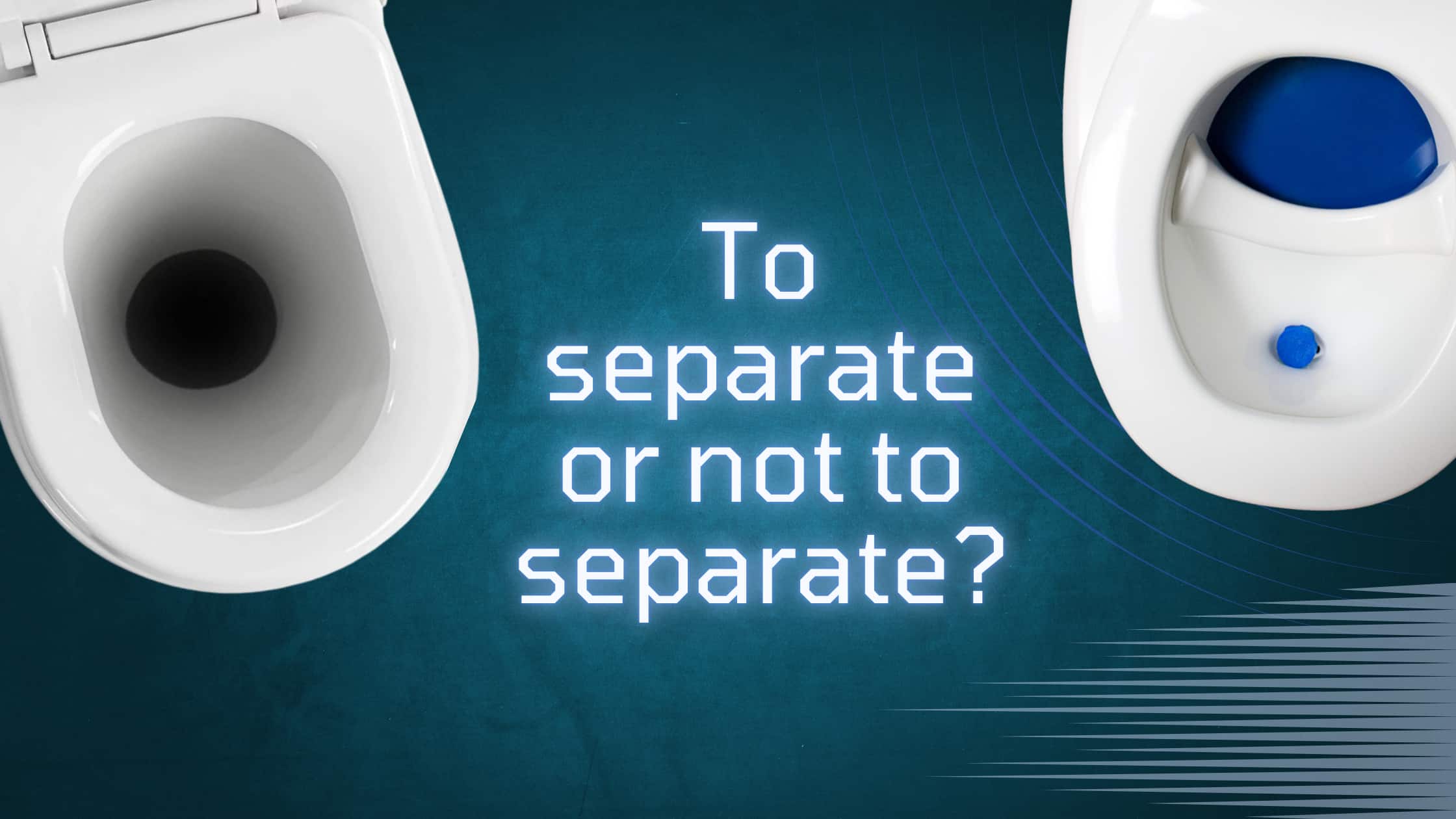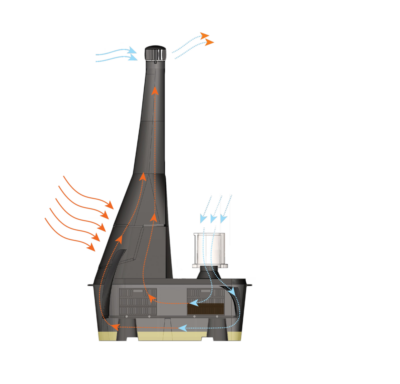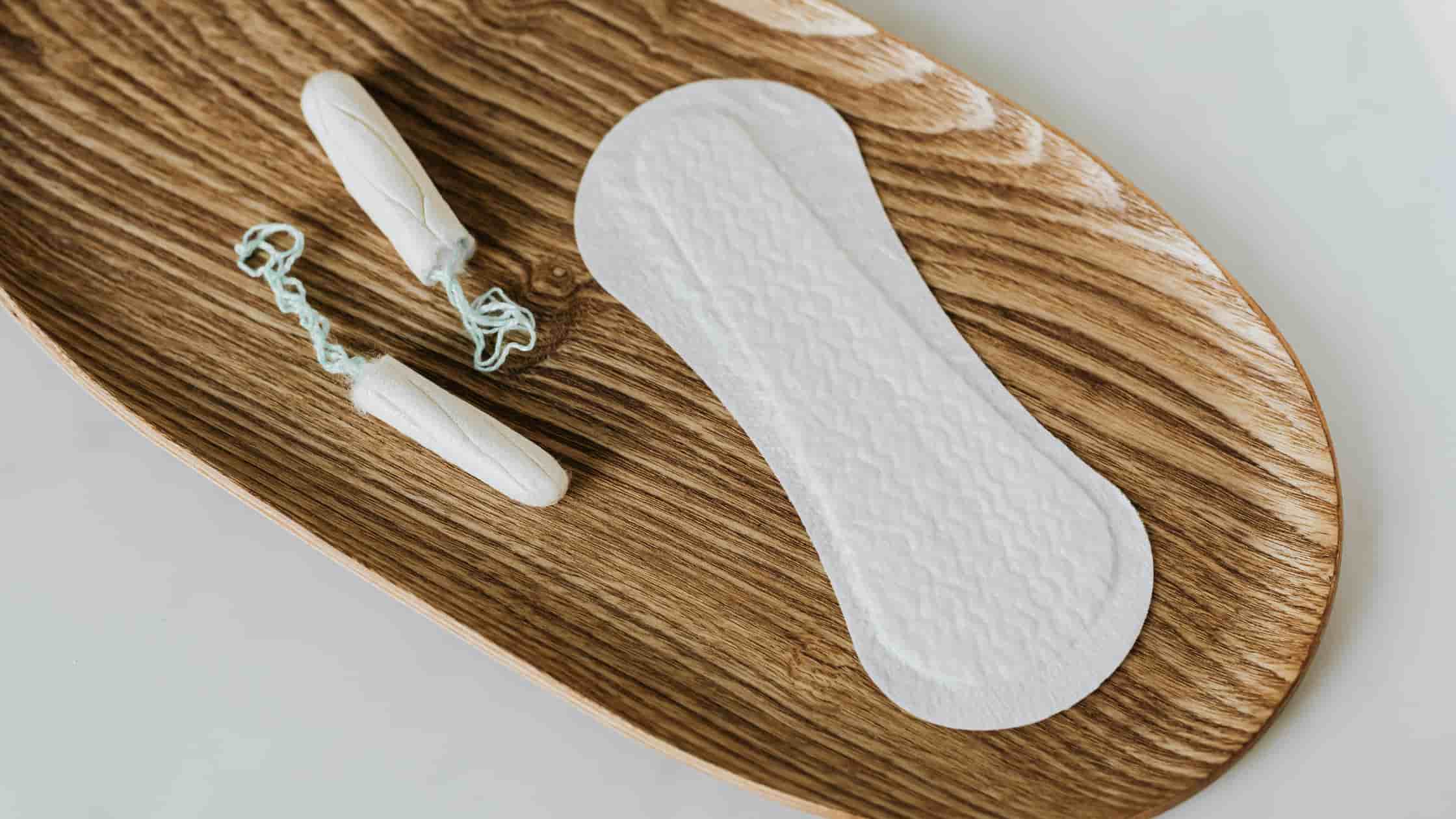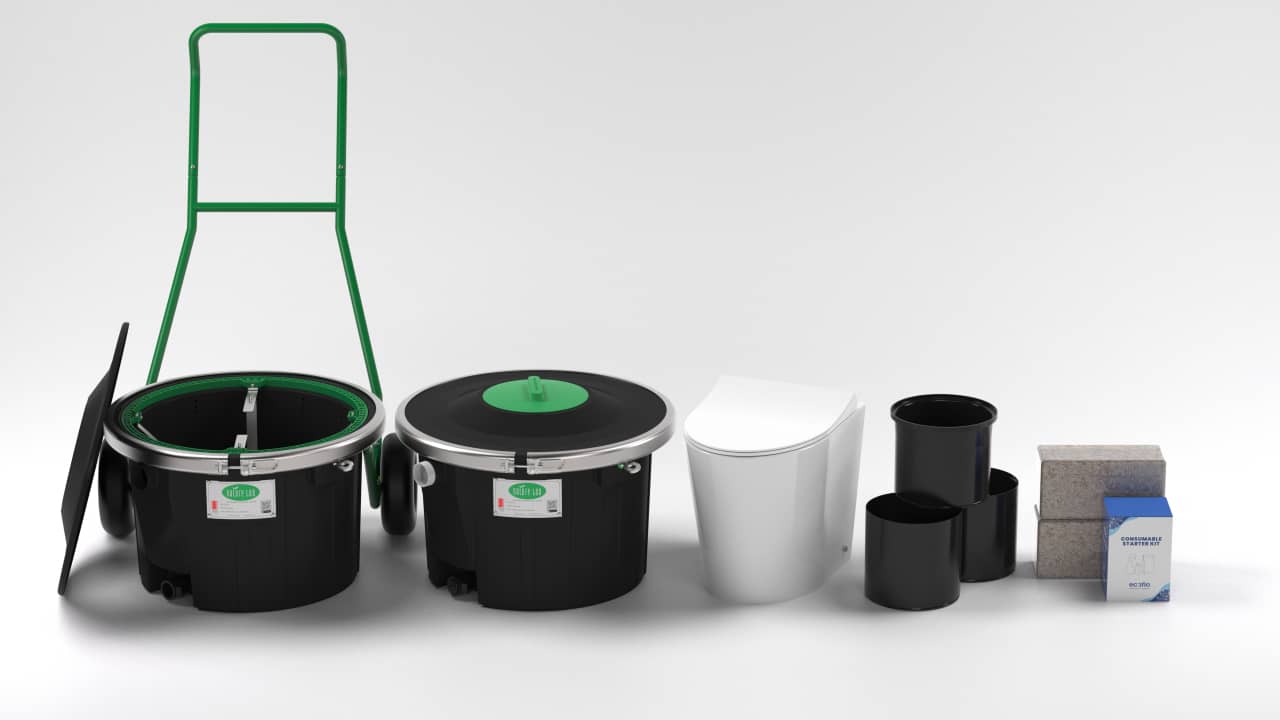
Kazuba news – January 2025
Kazuba have announced a series of upgrades and new options for their highly successful range of semi-public off-grid, waterless toilets, that are serving thousands of

Like a lot of things in life, the answer is “it depends”. So read on to find out more!
In essence, there are two main types of compost toilets. Those that separate or divert liquids from solids (urine from faeces) at source by using some form of urine diverter, and those that don’t – in other words, everything goes together into the same container.
Within each of those types of toilet, there are models that just collect the ‘raw materials’ which are periodically transferred from the toilet to a compost pile where the composting actually happens (I call these ‘compost’ toilets), and those that actually do the composting within the toilet chamber (I call these ‘composting‘ toilets – note the ‘ing’ on the end of composting).
Furthermore, most non-separating toilets (apart from a very simple bucket toilet) also have some form of leachate or liquid drain. Without some control over the moisture levels, the material can get too soggy meaning oxygen is excluded and the composting will turn anaerobic, which is slow and very smelly.
For a more detailed discussion on the differences, check out our Podcasts…
The answer is that it depends on a number of factors, including how many people the toilet needs to serve, whether they are family and friends or the public, what experience you want to provide the toilet users with, and in some cases, how much space you have.
In this article, I’ll explain the pros and cons of each method (by referring to the various products we sell) and will argue that both can work well, but some situations are better suited to separation, whereas others are not.
As ever, don’t hesitate to get in contact if this gets too confusing and you want a chat – we’re happy to discuss your situation/requirements and come up with some recommendations…
The first commercial urine-diverting toilets were developed by Separett of Sweden back in the 1990’s. They were looking at ways to improve the toilet facilities in remote, off-grid summer cottages in Sweden. The simple buckets or long drop toilets were not very pleasant and smelled really bad. A solution was needed that was kind to the environment, pleasant and odour-free to use, and didn’t require water or a sewage connection – it arrived in the shape of a urine-diverter.

Urine diversion is achieved by dividing the toilet bowl up so that the front part catches the urine (a bit like a funnel) and the rear allows solids to drop through into a container of some sort. When someone sits down to use a toilet, the pelvis is tilted forwards slightly and regardless of gender, urine flow will be directed towards the front.
By separating liquids from solids before they mix, the urine can be run either to the ground via a soak-away pit, into a suitable drain, or into a container. Urine is typically sterile as it leaves the body, so doesn’t present a direct health risk to people. The remaining solids account for under 20% of the total volume of bodily waste, so are much easier to manage in terms of volume and odour.
Separett went on to create the Separett Villa, which looks very much like a flushing toilet, but incorporates a low-power fan to remove the residual odours. Not needing any sawdust or cover material meant the Villa was simple to use and maintain, but could also be incorporated inside a dwelling. Separett’s most recent product, the Tiny, also works on the same principle as the Villa, but is more compact and has the option of a removable urine container making it suitable for mobile users.
The Air-Head composting toilet also uses a urine diverter to funnel the urine into an easy-to-change container, making it ideal for boats and vans. Depending on the amount of use within a given time period, the Air Head can be considered a composting toilet, although most people will be emptying it more regularly and using it as a compost toilet and finishing the composting elsewhere. By separating liquids and solids, the Air Head remains compact and is a viable solution to really small spaces.
The advantages of urine-separation:
The disadvantages of urine-separation
Urine-diverting toilets, such as the Separett Villa and Tiny, and the Air Head, are ideal for use in houses, dwellings and smaller spaces (the Separett Tiny and Air Head are ideal for boats and motorhomes) where people can learn to slightly adapt their positioning etc. to ensure liquids and solids go in the right way.
One of the main advantages of non-diverting toilets is their simplicity of use. Unlike a urine-separating toilet, they don’t require the user to sit down and are not fussy about whether someone is sitting, squatting, standing or leaning.
However, by collecting all the liquid and solid waste together, you have the potential for a smelly slurry to build up, so some form of internal separation of excess liquids is needed, along with an efficient ventilation system.

Our Kazuba products have been used on allotments, golf courses and public sites across the UK. They have a collection basket under the toilet that initially captures everything. Liquids will either be evaporated by the air flow or will filter down onto the evaporation plate in the large container set into the ground. This post-use separation makes the Kazuba really easy to use and simple to maintain. The Kazuba does not compost the solids – they are collected and dried within the unit and are subsequently emptied and composted away from the toilet. The high capacity, ease of use, and low maintenance regime of the Kazuba make them suitable for semi-public and public use.
The WooWoo GT is another non-diverting toilet that uses a unique ‘capillary’ base to allow excess liquids to pass down into a lower chamber and ultimately run out as a leachate. This maintains the ideal moisture levels for composting to take place within the container. The WooWoo GT requires the user to add some cover material such as wood shavings, after each use to enable the composting process to happen. The WooWoo GT is also available with an optional porcelain pedestal that provides a real ‘home comfort’ feeling for the user.

The Nature Loo Alectura composting toilet works in a similar way to the WooWoo GT in that the base ensures excess liquids can drain away from the composting mass. The Alectura comes with a porcelain pedestal for a familiar user experience. The composting chamber is situated under the floor. An electric fan (either 12v or mains), ensures the whole process is odour-free.

Advantages of non-separating toilets
Disadvantages of non-separating toilets
Non urine-diverting toilets such as the Kazuba are suitable for public or semi-public use due to the ease of use, high capacity, and low maintenance requirements. WooWoo GT and Alectura composting toilets are ideal for use in shepherd’s huts, cabins and huts, including ‘glamping’ users where there is less to go wrong and people want a familiar experience and where separating toilets might be too high maintenance or prone to misuse.
Our non-separating toilets generally require more effort up front in terms of the initial installation, but the payback is lower overall maintenance and typically, an easier to use toilet.
Initial planning and research is key to finding the right solution for you. You’ll need to have a good idea about the how many people are likely to use the toilet in a given period of time, the frequency of use, the type of user (for example someone living at home, or a short-stay glamping resident versus a day visitor to an allotment or golf course).
With a good visitor profile, and an idea of where you want your waterless toilet, we can help you decide if separating or non-separating is the best option for you.
Get in touch to speak to one of our friendly team.

Kazuba have announced a series of upgrades and new options for their highly successful range of semi-public off-grid, waterless toilets, that are serving thousands of

When it comes to compost, composting and waterless toilets, there are some questions that very few people feel comfortable asking, but everyone wants to know

If you keep an eye on our website, you might have noticed a new product slip in recently – the Alectura Premium by Nature Loo.
Not sure which toilet is right for you, need a quote or want to know a little more information?
Help us advise you by telling us a little about your situation - or even better, give us a call to discuss options!
Alternatively, you can write us an email at:
or give us a call on:
Sign up to our newsletter to receive WooWoo news and offers
Like us on Facebook
Suppliers














